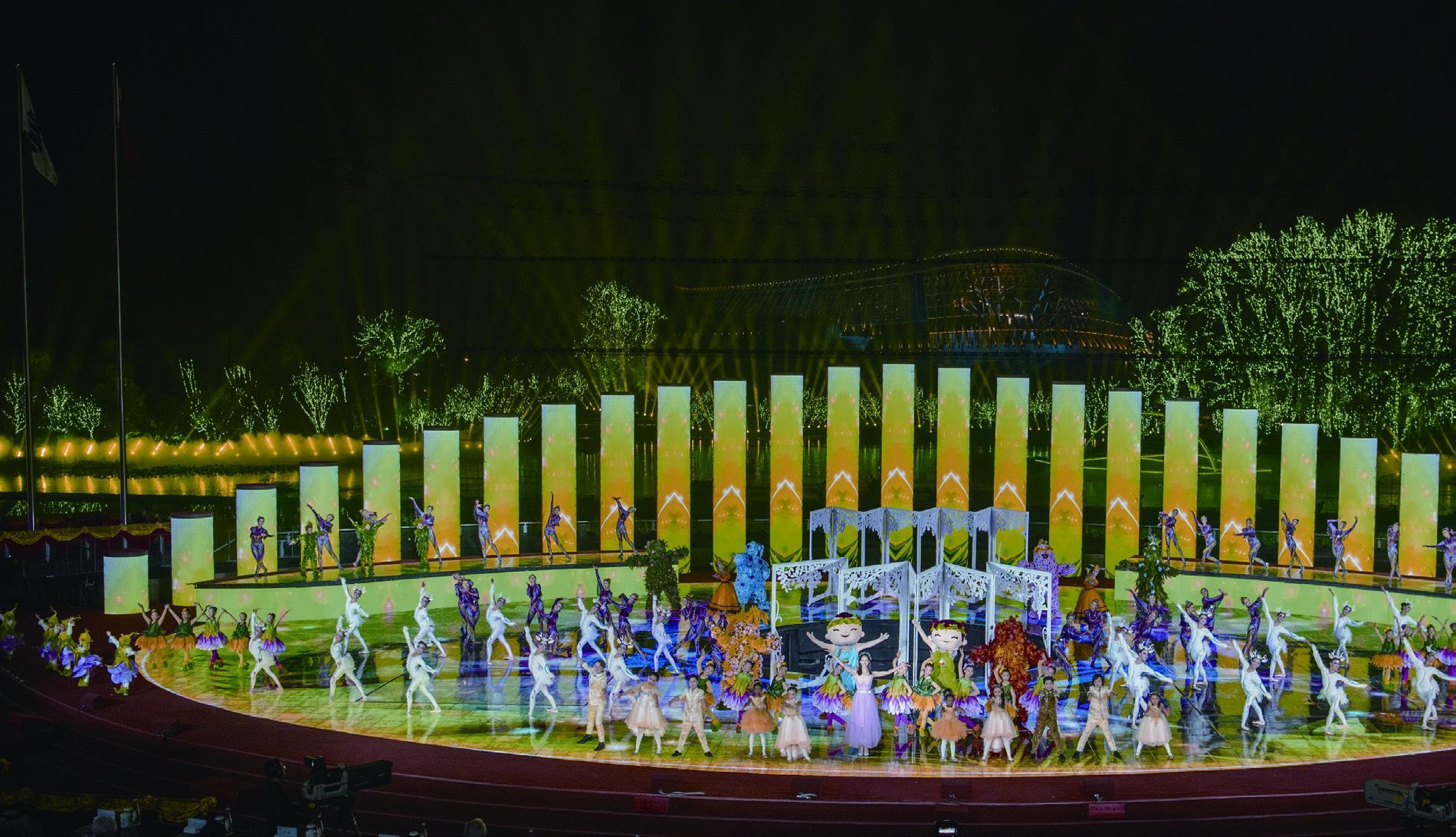A Green Legacy
2019-10-27ByLiQing
By Li Qing
From balmy spring to golden au- tumn, the International Horticultural Exhibition 2019 in Beijings northwestern suburban district of Yanqing, with over 100 distinctive gardens and exhibition areas, came to a close on October 9, with a festive closing ceremony.
By showcasing valuable plants from all around the world for over five months, it demonstrated how humans and nature can coexist and also highlighted Green Lives, Better Lives, the theme of the expo, proving the possibility of sustainable development.
The expo celebrated the achievements of green development from different countries and cultures, Chinese Premier Li Keqiang said during the closing ceremony.
A harmonious event
The 162-day expo created a marvelous visual feast. As the largest ever horticultural event on the globe, it attracted 110 countries and international organizations, over 120 non-official participants and nearly 9.4 million tourists. About 8,000 gardening plants and 820 vegetable, fruit and herb species were displayed in a 503-hectare oasis.

“The principle of ecological priority was adhered to throughout the design, construction and operation of the expo,”Cui Yong, Director of the Publicity Planning Department of the Bureau of Beijing International Horticultural Exhibition Coordination, told Beijing Review.
The worlds top architects were invited to design 14 special gardens with unique styles and concepts. Their work complemented the landscape, which consists of mountains, water bodies and forests, and was an exploration of how human-made architecture can conform to or even restore nature, while at the same time, becoming a vivid and beautiful illustration of garden concepts and themes.
They promoted new and popular directions in the industry, Judith van der Poel, a landscape architect at Niek Roozen Landscape Architects, a Dutch landscape design bureau, and co-designer of the Dutch section of the expo, told Xinhua News Agency.
According to Cui, the green concepts and technologies applied to floriculture, rare plants, bonsai and viewing stones not only enriched the content of horticulture but also expanded the significance of the expo. For instance, new technologies in areas such as wetland restoration, water desalination and clean energy generation also served to make the expo a model for the international community to build a green future.
In addition, by showing the beauty and role of plants and nature, visitors were made to realize the importance of protecting nature through pursuing a green and healthy life, Vicente Gonzalez Loscertales, Secretary General of the Bureau of International Expositions, told Xinhua.
To offer a comprehensive experience featuring diverse cultures, the Beijing expo held 3,284 activities. Along with the opening and closing ceremonies, over 1,000 events including individual country days and a variety of theme days, combined with fl oat parades and performances, created a golden channel for public entertainment.
Expo participants also exchanged achievements and experiences on issues including horticultural production and green development.
It also served as a platform for young people to communicate. Joy Dancing Beijing 2019, an art exchange week featuring over 5,000 teenagers from 13 countries participating in the Belt and Road Initiative, was held at the Guirui Theater on the expo grounds in August.

Initiated by the expos Coordination Bureau, Chinas first documentary about Chinese plants and their connection to the world premiered on TV on September 13. The 10-episode series demonstrates how Chinese plants grew and became known in other countries based on important historical events and stories. Audiences can also learn about the Chinese philosophy of the harmony of nature and humans.
Profound influence
The internationally endorsed A1-level expo held 145 contests and professional conferences. Jiang Zehui, President of the China Flower Association, announced the winners of the contests at a press conference on October 8.
The expo brought together key industry players from around the world who are likely to work together in developing the Chinese industry and market for ornamental horticulture production, Bernard Oosterom, President of the International Association of Horticultural Producers, told Xinhua.
“Florists from 31 countries and regions attended the World Ornamental Horticulture Summit 2019 during the expo,” Jiang said, adding that their advanced skills and new products enhanced dialogue in the industry.
Cui said the expo showed the world how to protect biodiversity with low-cost maintenance and how to beautify citizenslives through natural enjoyment in a small city space.
“At a moment when global attention is turned toward shared environmental challenges, the expo has been a grand gathering of nations reflecting the importance of collaboration and shared responsibility in building a green future for coming generations,” Loscertales said. And thanks to the expo, it was possible to strengthen partnerships among countries, regions, corporations and other participants for developing a more sustainable and ecological way of life.
China paid great attention to the horticultural expo as well as environmental protection for the well-being of the people, Fayqa Ashkanani, in charge of Qatar Gardens, told Xinhua. Qatar is also reducing the impact of oil and natural gas drilling activities on the environment and afforesting more deserts, she said. Qatar will host Horticultural Exhibition 2021.
China will bolster exchanges and cooperation on ecological conservation and promote the sharing of best practices to help other developing countries, to the best of its ability, to grow a green economy and realize sustainable development, Li said.
Post-expo scenario
During the expo, 2 million plants from China were exhibited, including over 20,000 new varieties and products. At the China Pavilion, one of the most popular destinations of the event, a show of rare plants left a deep impression on visitors from all over the world. After the conclusion of the expo, 200 of these rare plant species have been moved to the Beijing Botanical Garden.
Yanqing, which is home to the Badaling section of the Great Wall and will be a winter Olympic competition venue in 2022, recorded a remarkable increase in tourism arrivals due to the expo. From the opening of the expo on April 29 to October 7, the district received 20.8 million visitors and earned 1.53 billion yuan ($215.5 million) in tourism revenue, up 71.3 percent and 60.8 percent year on year, respectively.
The positive changes in Yanqing are a vivid reflection of the concept that “clear waters and green mountains are invaluable assets,” Cui said.
The exhibition area of the expo will be transformed into a demonstration base of ecological conservation and an innovative base for the horticultural industry, in addition to a destination for ecotourism and leisure. Moreover, it is expected to play an important role in supporting the 2022 Olympic Winter Games, he added.
